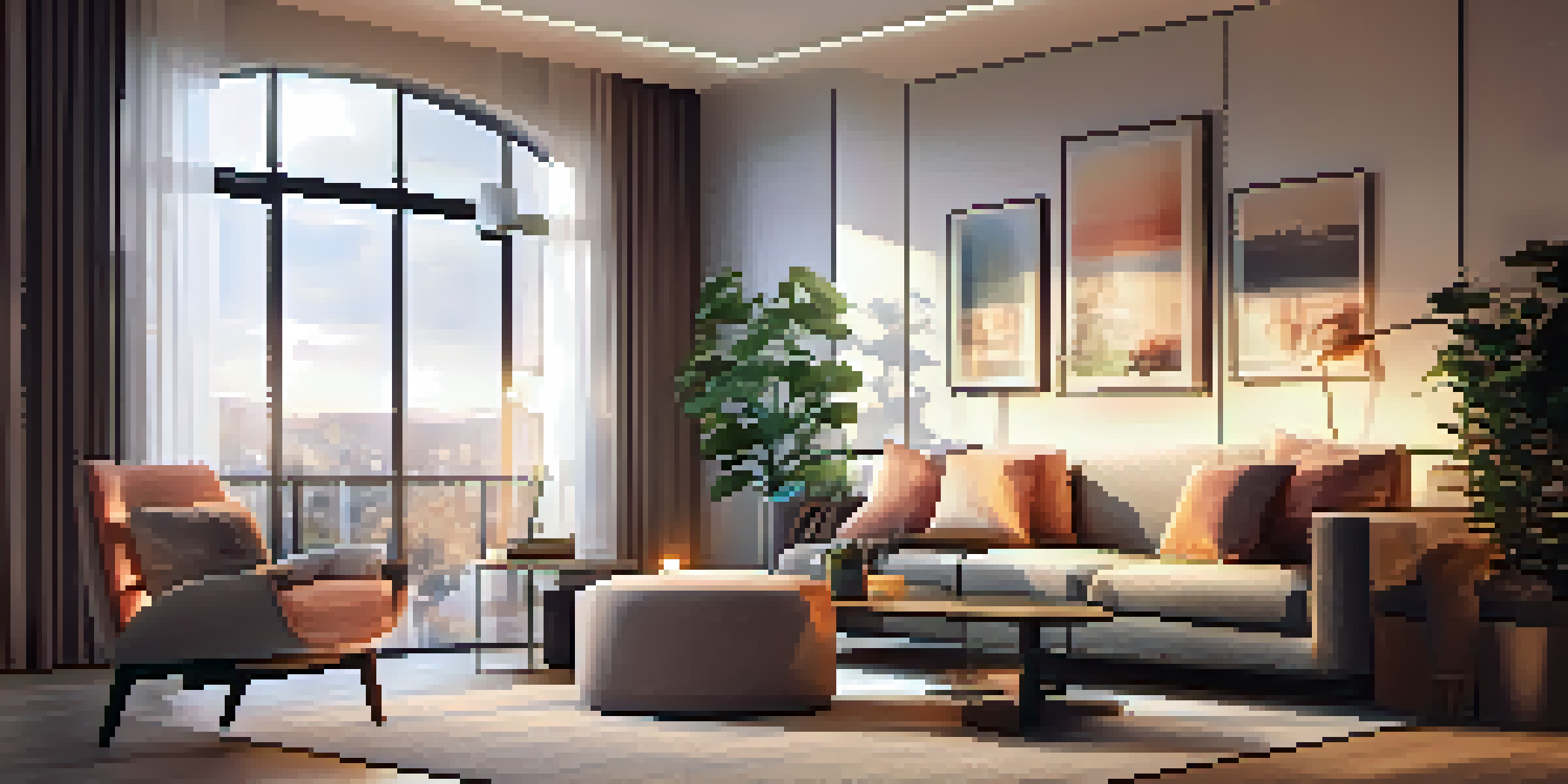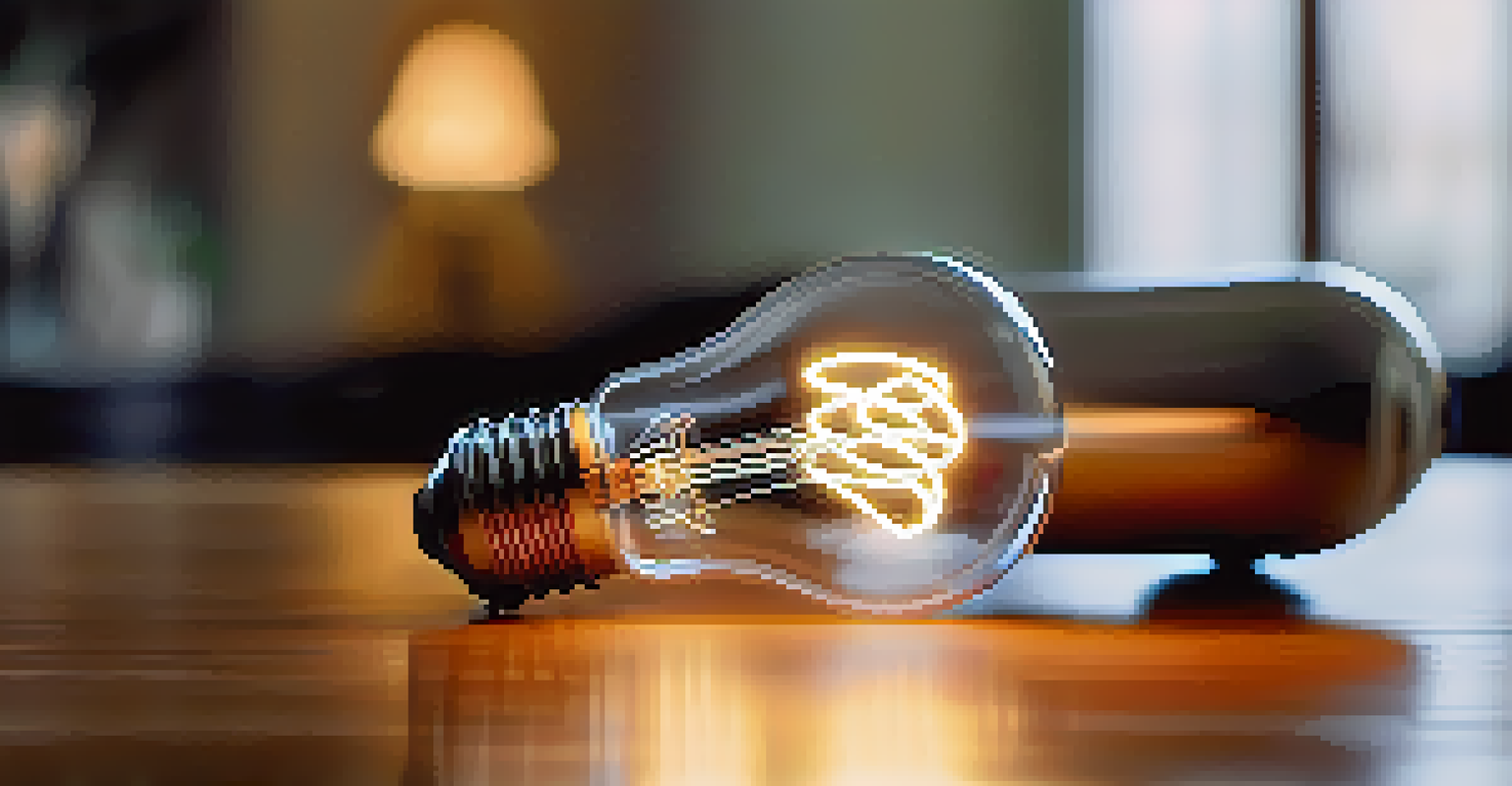Smart Lighting: A Guide to Automated Home Illumination

Understanding Smart Lighting: What Is It?
Smart lighting refers to advanced lighting systems that allow homeowners to control their lights remotely or automate them based on various triggers. Imagine being able to adjust your home's brightness with just a tap on your smartphone or through voice commands. This technology integrates seamlessly with smart home ecosystems, offering convenience and enhanced energy efficiency.
The future is already here – it's just not very evenly distributed.
The core of smart lighting lies in its ability to connect to the internet, enabling features like remote access, scheduling, and customization. Whether it’s creating a cozy atmosphere for movie night or ensuring your home is well-lit when you arrive, smart lighting adapts to your lifestyle. It's much like having a personal assistant for your home ambiance.
As more people embrace smart home technology, smart lighting has become an essential component. Not only does it provide practical benefits, but it also elevates the aesthetic appeal of your living spaces. With a variety of styles and colors, you can create a mood that reflects your personality, making your home truly yours.
Benefits of Smart Lighting: Why You Should Consider It
One of the most significant advantages of smart lighting is energy efficiency. By utilizing LED bulbs that consume less power and features like dimming, you can significantly reduce your electricity bills. Imagine saving money simply by using lighting technology that adjusts itself according to your needs.

Smart lighting also enhances security. With features like scheduling and motion sensors, you can simulate occupancy even when you're away, deterring potential intruders. Picture coming home to a well-lit house, giving you peace of mind after a long day.
Smart Lighting Enhances Home Life
Smart lighting allows homeowners to control and automate their lighting, creating a more convenient and personalized living environment.
Additionally, smart lighting systems can improve your overall quality of life. They can be programmed to gradually brighten in the morning, mimicking a natural sunrise, which helps in waking up more gently. This small change can make a big difference in how you feel as you start your day.
Key Features of Smart Lighting Systems Explained
Smart lighting systems come equipped with various features designed for user convenience. One of the standout features is the ability to control lighting through mobile apps, where you can change colors, adjust brightness, and set schedules. It's like having a remote control for your entire home lighting at your fingertips.
Technology is best when it brings people together.
Voice control integration is another exciting aspect. Many systems work with popular virtual assistants like Amazon Alexa or Google Assistant, allowing you to command your lights hands-free. Imagine walking into a room and simply saying, 'Turn on the lights,' without having to fumble for a switch.
Lastly, automation is a key feature that brings smart lighting to life. You can set your lights to turn on or off at specific times or based on your location, ensuring your home is always well-lit when you need it. It's a level of convenience that makes your daily routine smoother and more enjoyable.
Choosing the Right Smart Lighting for Your Home
Selecting the right smart lighting involves considering your needs and preferences. Start by identifying which areas of your home you want to illuminate smartly—living rooms, bedrooms, or outdoor spaces. Each area may require different types of lighting solutions, so having a clear plan can streamline your choices.
Next, think about compatibility with existing smart home devices. You want a system that works seamlessly with your current setup, whether that includes smart speakers, thermostats, or home security systems. This ensures that you can control everything from a single app or device, enhancing your overall smart home experience.
Energy Efficiency and Savings
By utilizing smart lighting features, such as LED bulbs and dimming, users can significantly reduce their electricity bills.
Lastly, consider the range of features offered by different lighting brands. Some may provide color-changing bulbs, while others focus on energy efficiency or user-friendly apps. Researching these options can help you find the perfect balance between functionality and aesthetics for your home.
Installation Process: Setting Up Smart Lighting
Setting up smart lighting is generally straightforward, making it accessible even for those who aren't tech-savvy. Most smart bulbs simply screw into existing fixtures, eliminating the need for complicated wiring. Just like replacing a regular light bulb, you can upgrade to a smart bulb with minimal effort.
Once installed, you typically need to connect the bulbs to your home Wi-Fi network. This process often involves downloading a companion app and following step-by-step instructions. It’s designed to be user-friendly, so you can start enjoying your new lighting in no time.
If you're opting for a more extensive smart lighting system, you might consider professional installation. This is especially true for hardwired fixtures or complex setups. However, many brands provide clear guidance, ensuring that even DIY enthusiasts can achieve a professional look.
Integrating Smart Lighting with Other Smart Devices
One of the best aspects of smart lighting is its ability to integrate with other smart home devices. For instance, linking your lighting system with smart thermostats allows you to create energy-saving schedules effortlessly. Imagine your lights dimming as your thermostat adjusts, creating the perfect ambiance while saving energy.
Smart lighting can also enhance your home security when integrated with security cameras and alarms. You can set your lights to flash or turn on if your security system is triggered, alerting you to potential issues. It’s like having an extra layer of protection that works in tandem with your other devices.
Integration with Smart Devices
Smart lighting systems can seamlessly integrate with other smart home devices, enhancing security and creating automated routines for everyday activities.
Furthermore, consider the potential for creating routines that combine various smart devices. You can set a scene for movie night where the lights dim, the thermostat adjusts, and your favorite streaming service opens—all with a single command. This level of automation adds significant convenience to your daily life.
Future Trends in Smart Lighting Technology
As technology continues to evolve, smart lighting is expected to become even more advanced. One exciting trend is the development of circadian lighting, which mimics natural light patterns to support our biological rhythms. This means your lights could change throughout the day, promoting better sleep and overall health.
Another trend is the integration of smart lighting with artificial intelligence. Imagine lights that learn your preferences over time, adjusting automatically to suit your mood and activities. It’s like having a personal lighting designer that knows just the right atmosphere for every moment.

Finally, sustainability is becoming a significant focus in the smart lighting industry. With ongoing advancements in energy-efficient technology, future smart lighting systems will likely consume even less power while offering enhanced functionality. This focus not only benefits your wallet but also contributes to a greener planet.